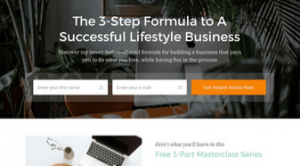If you’ve ever sat through a presentation and thought, “Why am I here?” you are not alone. Most presentations fail to answer this most fundamental question until five, ten – even thirty minutes into the content. Presentations that do not quickly answer the question “Why?” are frustrating, confusing, and causes distraction-prone buyers to tune out. In his popular TED Talk, Start with Why, Simon Sinek proposed that people won’t fully buy into a product, service or concept until they understand the “why.” Start with why is how all great presentations begin. But…
Starting with why is, well…just the start. To really connect with today’s buyers and increase your presentation’s success, it’s important to know which “why” you are addressing in your presentation. This isn’t as daunting as it seems. The underlying “why” for most prospects typically boils down to one of the following:
Start with Why :
Why should I buy this product or service?
Why should I buy it from you?
Why should I buy it now?
Starting with the right “why” is critical for advancing the conversation and the sale. Consider the following example:
Imagine you are trying to decide whether to buy a house or continue to rent. You set a meeting with an agent and he talks for fifteen minutes about why you should choose his company’s services rather than a competitors. At the end, you are confused, annoyed, and nowhere closer to making a decision at the end. If the agent had instead addressed your central question, “Why should I buy vs. rent?” he may have very well ended up with a new client.
Addressing the wrong “why” in your sales presentation is often the result of insufficient discovery or relying on assumptions. Skip this important step at your own peril!
Once you’ve identified your prospect’s specific “why,” use the suggestions below to increase your chances of success.
3 “Start with Why” Questions:
Here are the key things to take into consideration when addressing each type of “why” question in your presentation:
Why should I buy this product or service?
This “Why” question is common when a prospect is just entering in to the buying cycle or unaware that he has a problem that needs or can be solved.
In a “why buy” scenario, you’ll be wasting your time if you parade out all your product features and benefits before you have prospect buy-in to solve the problem. Instead, improve your chances of success by focusing on the impact of the problem and why it needs solving. Create a compelling case for change by exploring the contrast between the prospect’s current state and a new and improved future state.
For a prospect grappling with the “why buy” question, an analogy or customer success story delivered early in your presentation can be very effective at overcoming resistance to change.
Why should I buy from you?
In this situation your prospect agrees he has a problem and is interested in solving it, but he is still exploring different options. This could mean not just direct competitors, but indirect competitors as well. For example, let’s say your prospect is experiencing a drop in sales revenue and you sell a CRM solution. In addition to other CRM platforms, your prospect is considering other options, including hiring more sales reps, discounting, or running a marketing campaign. Either way, you are facing competition.
When going head to head with competition it’s important to sell value to avoid falling into a pricing war or a feature vs. feature smack down. Know your competition well so you can position your competitive advantages upfront in your presentation. You can also use timing to your advantage. If possible, present before your competition so you can disarm and address any potential landmines your competition might be planting.
Why should I buy now?
This prospect has identified a need and has indicated that you are the preferred vendor. Unfortunately, she has no sense of urgency around getting a solution into place. Until this prospect has made the decision to buy a priority, selling your company, your product, or your category will do little to move the needle.
Instead, place the focus of your presentation on the risk or cost of delay and potential opportunity costs. As you go through the body of your presentation explore each challenge your prospect is facing. Tie it back to the impact of not resolving the problem by a specific date.
Summary:
Remembering to start with why is an important first step in developing your presentation. But don’t forget to quickly narrow your focus down to the specific “why”question for your buyer. Structuring your presentation around the “right why” will dramatically improve your chances of success.
(49)





